Have you ever ridden a 12 hour?
I’ve ridden a couple, with my best, way back in 1980, a shade under 256 miles, from what I remember of the experience I wouldn’t have fancied riding another 55 miles to take me up to 311 miles.
However, Scotland’s Josh Quigley rode an average of those 311 miles every day for a week to establish a new Guinness world record for the Seven Day Cycling Distance Record…
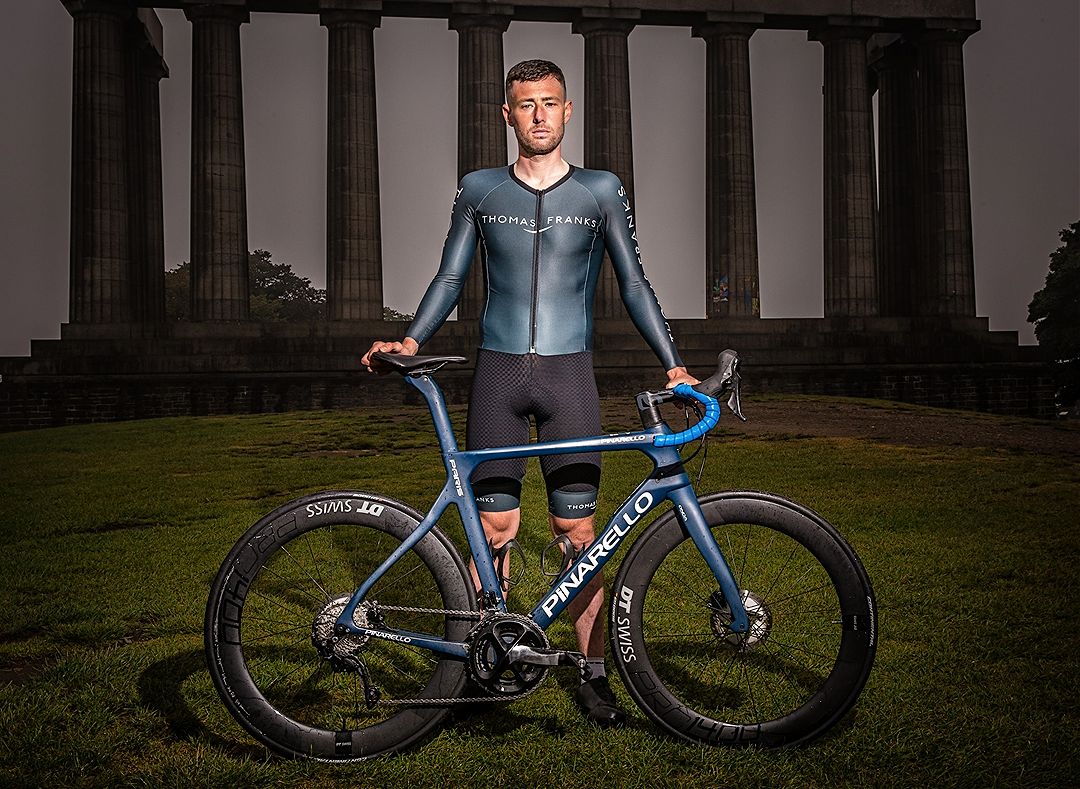
Let’s start with background; where are you from, how old are you and what do you do for a living?
“I’m 29 years-old and I was born and raised in Livingston, Scotland where I still live.
“I’m very lucky to make a living from cycling and be a full time professional athlete.
“I’m sponsored by a company called Thomas Franks which allows me to put all of my time into training and the world record attempts I’ve been doing in the last 12 months.”
Are you from a racing background?
“No I am not from a racing or even a cycling background.
“I came to cycling much later in life, in my mid 20’s and only really took it seriously when I was 26 years-old.
“Back in 2015 I went through a tough time in my life which led to a depressive period and a failed suicide attempt.
“After being lucky to survive this I knew I had to make some big changes, stop drinking alcohol and take my life in a new direction.
“At this time I was running my own business in Edinburgh and was at a business event where Sir Chris Hoy was speaking; I felt really inspired by him that day, sitting in the audience and said to myself ‘Damn it, I’m going to go cycle around the world.’
“This was the big goal I set myself and I jumped right into the deep end and attempted to cycle around the world.
“There were a lot of failed attempts and false starts but in 2019 I finally went for it and gave it a proper go.
“I cycled 14,500 miles around the world in eight months and was on the penultimate leg across America when I was hit by a car which was travelling at 70mph.
“I spent six weeks in hospital and rehab. with a long list of broken bones.
“It was on this journey around the world in 2019 that I discovered a passion and talent for cycling and this led to me becoming a full time athlete and achieving the Guinness World Record.”
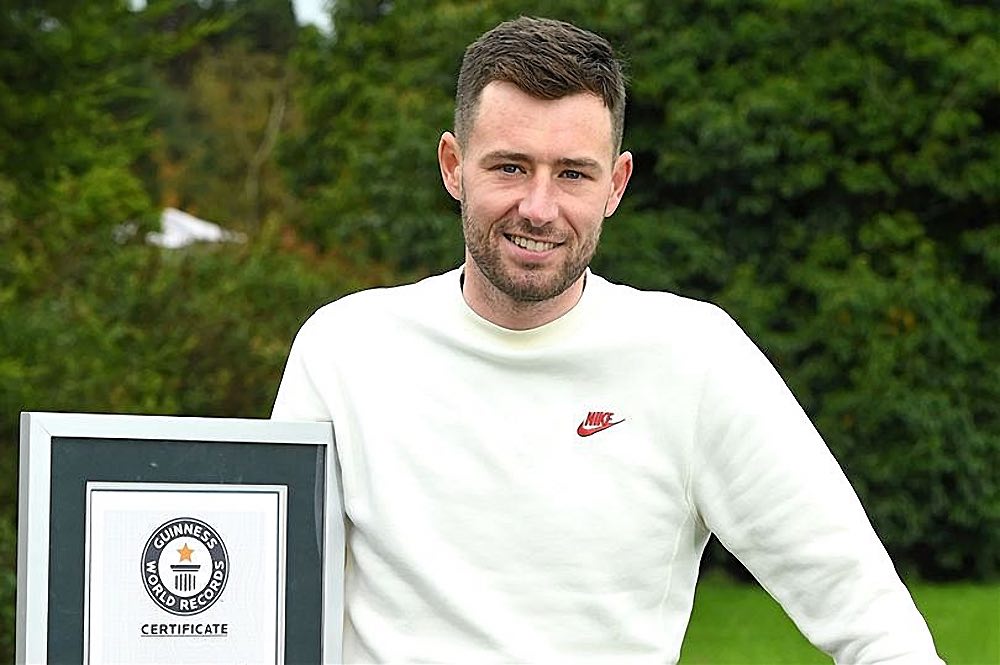
Why that record and where did the idea come from?
“In January of this year I had a nasty crash on a winter training camp in Dubai.
“I came off the bike at 40mph on a downhill descent of Jebel Jais, which you might recognise from the UAE Tour and is the highest mountain in the country.
“It was similar to my crash in America, I had another long list of broken bones and spent two weeks in hospital out there before flying back to Scotland.
“I managed to get back on the bike again and after recovering and rehabilitating from all of my injuries, got into good shape and was looking for a new challenge or goal to direct my training towards.
“At this time we were still living under lockdown restrictions and there were no races or competitions I could enter, so I was looking for something I could do and it had to be something I could do in Scotland as we weren’t allowed to travel outside.
“At this time I already held the record for North Coast 500 which my team and I achieved in September 2020, so I didn’t really know of many other records we could go for so I decided to take on the Seven Day Cycling Distance Record.
“It’s a record I had always been interested in as I believed I could do it and I had followed a lot of the previous attempts with interest.”
What’s the basic premise? As many kilometres as you can in 7 x 24 hours?
“The record is most commonly known as the Seven Day Record or Seven Day Cycling Distance Record.
“But it’s now an official Guinness World Record and certified and verified by them; it’s official world record title is ‘The Greatest Distance Cycled in One Week – Unpaced.’
“It’s essentially who can ride the furthest distance on a bike in seven days.
“Whatever time you choose to start on the first day, the clock never stops and you have 168 hours until the official end of the attempt.
“There are a few key rules with Guinness that you must abide with.
“The most important is that the attempt is unpaced and you must ride on your own with no drafting of any other bikes, so you can’t ride a few miles with other cyclists.
“You also must do this on a road bike and you are not allowed to do it on a tri bike or with aero bars.
“It must be on a UCI legal road bike and comply with UCI regulations.
“The previous Guinness World Record was held by a professional cyclist from Australia but based in Spain called Jack Thomson, who set a new record of 3505 kilometres or 2177 miles back in September 2020.
“Jack took the record up quite a bit to a daily average of 500km per day or 311 miles.
“I’ve included the previous records and their distances for some context on the progression of this record over the years:”
- Tommy Godwin rode 2,084 miles (3,354 km) between 16th and 22nd July 1939. 297 miles per day / 477km
- Bruce Berkeley rode 2,825 kilometres (1,755 mi) between 23rd and 29th June 2014. 250 miles day / 402km
- Richard Nutt rode 2,830 kilometres (1,760 mi) between 1st and 7th June 2015. 251 miles per day / 403km
- James Golding rode 2,842.2 kilometres (1,766.1 mi) between 19th and 25th June 2017. 252 miles per day / 403km
- Bruce Berkeley rode 3,333.3 kilometres (2,071.2 mi) between 6th and 12th January 2020. 296 miles per day / 476km.
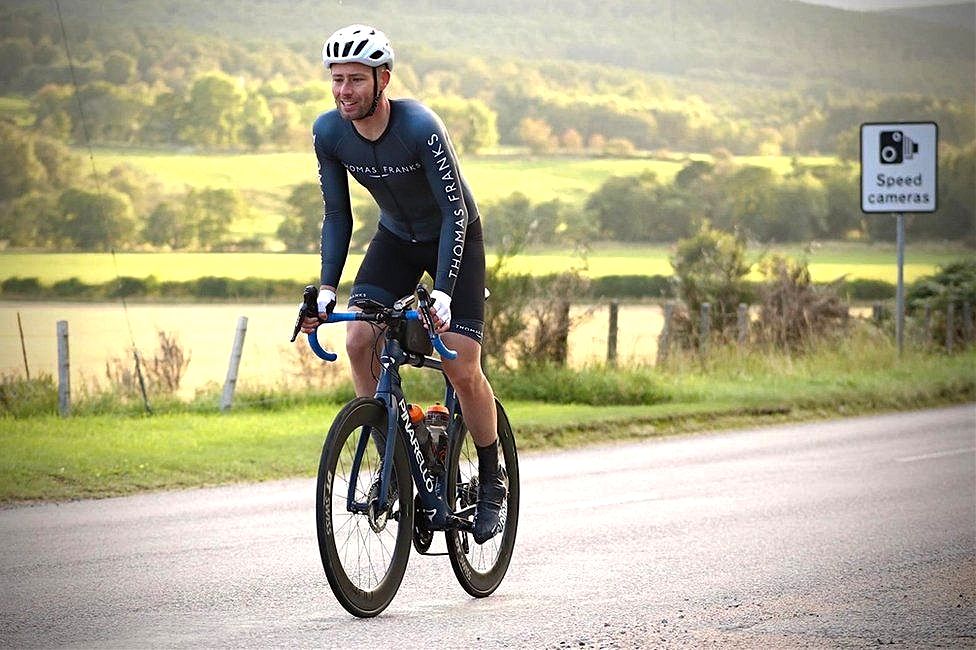
Tell us about your training and preparation for the attempt.
“The first thing I had to do was recover and rehabilitate from another injury.
“I had a first and failed attempt at this record back in April, but had to stop on Day four with a knee injury after doing 1,178 miles.
“This was a really disappointing and painful moment for me as I was on track to break the record and it took a while to get over that physically and mentally.
“I had a few weeks off the bike with my knee and then I was finally able to get back into training.
“I was basically just doing a lot of big miles and big days on the bike to prepare and get ready for this.
“I was doing mostly endurance and ultra-endurance training and on a standard week I would be doing anywhere from 350 – 500 miles per week and 20-30 hours.
“Back in July I had a really cool opportunity to take part in the Ineos Tour de France Challenge.
“I also do a lot of public speaking work sharing some of my cycling journeys with schools, businesses and events.
“I was doing some speaking work for Ineos at their Grangemouth office and they invited me to join one of the teams where they try and ride all the miles of the Tour De France whilst it’s taking place.
“I ended up doing all the miles on my own as part of one of the teams and did just under 2,200 miles in 19 days which was around 30 – 40 hours per week.
“That was a great block of training and gave me the confidence my knees were better and I could put a date in place for the second attempt.
“My final week of training for the attempt I did around 850 miles and just under 50 hours.
“I was getting bored of riding around the same roads and felt like I’d cycled all of Scotland so I decided to cycle 200 miles down to Blackpool on my birthday and then cycled back home the following day, before riding up to Aberdeen and then back home the day after that.
“From that point all the training was done and I was in great shape, it was time to have my taper week and then attack the record again.”
How did you chose the route?
“Our route was up on Deeside, Aberdeenshire and started just outside of Peterculter then went through Banchory, Aboyne, Kincardine O’Neill, Aboyne, Dinnet and then Ballater.
“Once we got to Ballater we turned around and headed back to the start.
“Each lap was around 32.5 miles and so one out and back was 65 miles.
“One of the guys on my team, my manager Paul Higginson is based up in the area and had suggested we use this route.
“We could have chosen a much easier and flatter route as we had around 7,000 – 9,000 feet of elevation each day.
“But it’s hard to find a totally flat route in Scotland without riding up and down a 10 mile stretch of road all day every day and I thought that would be totally soul destroying so we decided against that although it would have allowed us to cycle a lot more miles.
“The route we choose in the end was perfect because the support we had from the locals made such a huge difference to myself and the team.
“Along the way we had hundreds of supporters coming out of their houses to cheer me on as they were following our live GPS tracker and knew where I would be.
“By the end of the week the amount of people out supporting was incredible.
“It was like a mini Tour De France just for me as I was riding up and down that road all day myself with hundreds of fans on the side of the road, they were getting dressed up, holding signs and banners and generally just supporting me so much.
“By the end also the amount of cars on the road who were waving and cheering me was incredible.”
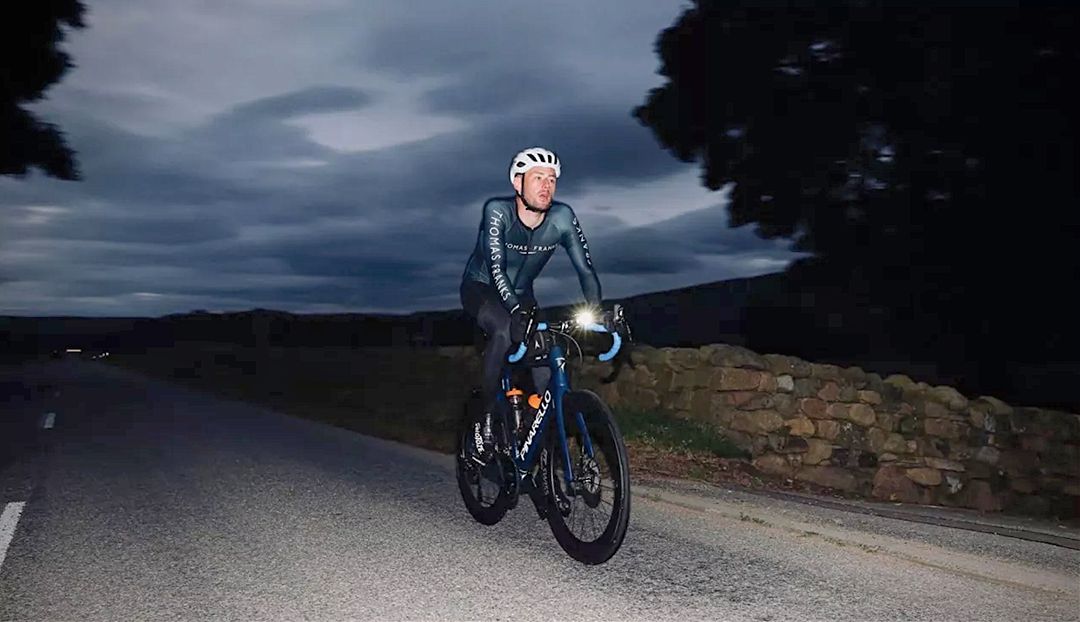
Where and how often did you sleep?
“The team and I were based at Maryculter House, which is a beautiful hotel situated just off the start of our route.
“I would sleep there each night once I returned to base at the end of the day.
“Sleep was the biggest challenge of the whole week and the lack of sleep was giving me real problems.
“I was only getting two to three hours at the most each night and that started to impact me during the day; there were a couple of days towards the end where we had to have a longer sleeps of around five to six hours and then start and finish later just to let my body catch up a bit.”
How many hours each day did you ride?
“Our official start time was 04:00 am on the Monday and that meant we would officially finish the following Monday at 04:00 am.
“The plan was to ride 20 hours per day from 04:00 am until midnight each day and then sleep from 01:00 am until 03.30 am after getting my massage from my massage therapist.
“The sleep deprivation affected this schedule but and we ended up riding around 16-19 hours each day, and on the final weekend I did a 38 hour ride to finish.
“The plan on the final weekend was always to ride through the night on Saturday and Sunday to allow us to do more and just go all in at the very end.
“On the Saturday morning we didn’t finish Friday’s ride until around 06:00 am due to the later start on Friday morning and then when I finally got on the bike at 09:00 am on Saturday morning we had 43 hours left until the official finish at 04:00 am on the Monday.
“In those final 43 hours I rode for 38 hours of them.
“After getting on the bike that morning I basically rode ‘til the end except from stopping to have a few 20 minute power naps in our support vehicle.
“It was this final weekend ride that essentially sealed and delivered the record.”
Tell us about your pace strategy.
“I always find that I don’t produce as much power in the cold and when it’s dark, so in the morning we had around 2.5 hours of darkness and then it didn’t really heat up until around 11:00 am.
“I would try to just take it really steady in the morning until that point and then in the afternoon between 11-7 when it was warmer and light conditions I would push on a bit; really push it when I was feeling good and strong, then in the evening I would go a bit easier as the cold and dark set in again and we had around four hours of darkness at the end of the day.
“I was riding based on feel a lot of the time too and I wasn’t sure how much fatigue would play a part on my power as the week went on.
“I was very positively surprised with how good I felt most of the week.
“I generally felt very strong and powerful on the bike all week and my power levels never really dropped off that much, the only issue was the lack of sleep and falling asleep on the bike, so the power I was able to maintain was actually pretty good and consistent throughout the whole week.”
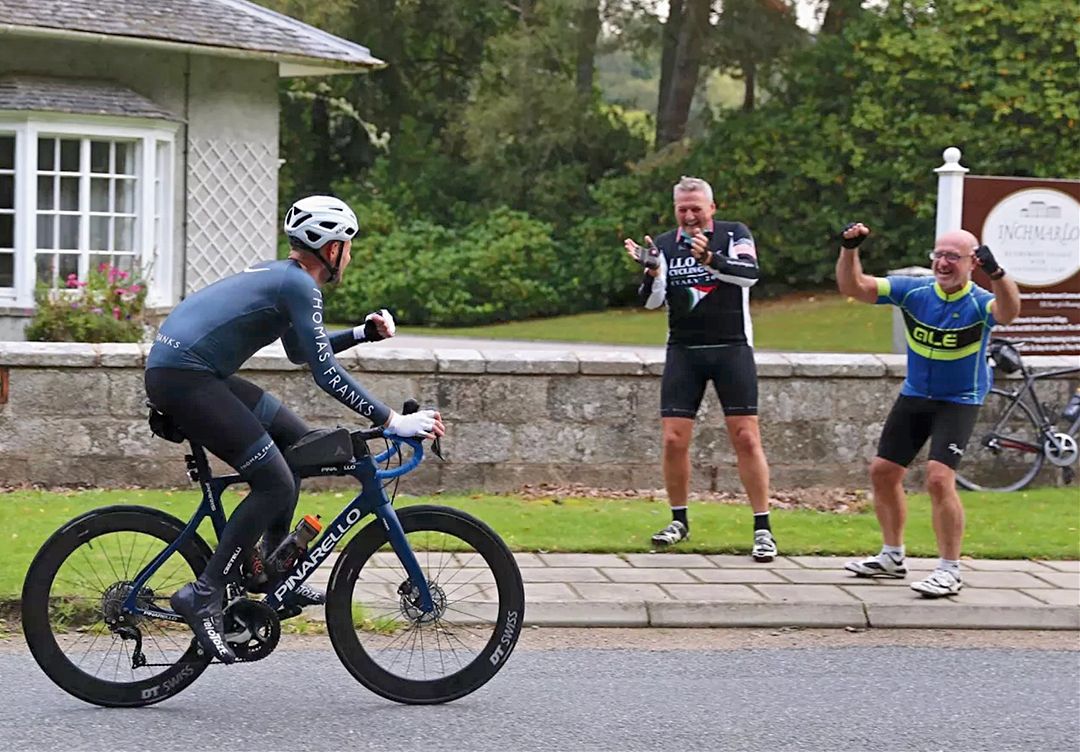
You mentioned that you’re not allowed an aero bike, why not and how is that monitored?
“No, you’re not allowed an aero bike, it has to be a UCI legal road bike.
“I’m not sure why that is, it’s just one of the rules.
“There’s a very lengthy evidence submission process that you must submit to Guinness in order to get one of their world records.
“Of the many things we had to do, one of them was getting our bike officially approved and get someone to testify that our bikes were UCI legal and met all of the regulations.”
Any mechanical ‘issues’?
“Over 2,000 miles in seven days and not one single mechanical issue, which is pretty remarkable.
“I’ve got a great relationship with my local bike shop Pedal Power in West Lothian who also sponsor and support me and before the ride they did a lot of work to the bike and everything that could have been replaced or upgraded was; tyres, gear cables, chain, cassette, brake pads as well as being fully serviced and stripped right back.
“We also had a mobile mechanic on our team, Daniel Ewing of Ewing Cycle Repairs who was coming to the hotel after midnight each night and servicing the bike to make sure there was no damage and the bike was good to go for the following day.
“A lot of work was put in before and during to look after the bike, but I think you also have to put this down to a stroke of luck and the cycling gods looking down on me.
“This was my time and it was meant to be I believe.”
Tell us about nutrition and hydration on the ride.
“Nutrition was tricky and one of the challenges we faced. Usually for my big rides I will use Torq energy bars, gels and their energy drink.
“I love those products and for a big ride of 12-48 hours I think they are perfect.
“When I broke the North Coast 500 record I was doing that mainly on bars and gels and that worked perfectly.
“But on a ride like this for a whole week it’s really hard to do the whole thing on just bars and gels and so we had to bring in a whole range of food groups and options.
“I burned an average of 11,000 calories each day over the seven days, so that’s a lot of food I needed to consume daily.
“I used a lot of liquid energy sources like Torq’s energy drink and Summer Training Formula from Allsports Nutrition.
“Always having a couple bottles on the bike with liquid nutrition is a really reliable way to make sure you’re always getting some fuel in you.
“Our golden rule on a big ride like this is always to aim for around 90g of carbs each hour.
“In the beginning it was very easy to track this using the bars, gels and liquid drinks.
“But as the week went on my stomach was starting to reject lots of different food and what I was eating each day was just based on what I personally fancied, craved or felt I could stomach that day.
“I basically eat almost everything and anything you can imagine; sandwiches, wraps, sausage rolls, bacon rolls, cakes, sweets, chocolate, Haribo sweets, tablet, fudge, home baking, burgers and then on the final weekend I was living off McDonald’s cheeseburgers as that was the only sort of food I could stomach as they are so easy to eat and digest.
“On the final day I couldn’t even eat any real food and was just drinking tomato and chicken soup from my water bottles on the bike.
“It definitely wasn’t optimal nutrition for the second half of the week but I just couldn’t stomach most foods and sometimes when you are doing an extreme ride like this quantity is more important than quality and you need to just make sure you are getting the fuel in from somewhere.”
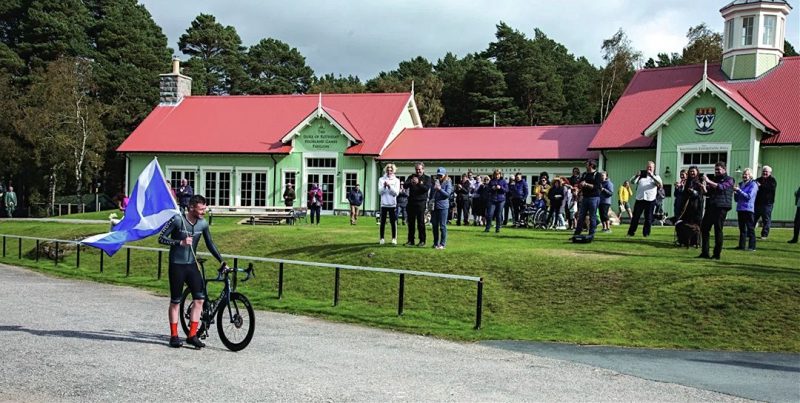
Tell us about your support crew.
“We had a team of around 20 people working on this project; 10 of them were working on the ground up in Aberdeenshire as our support crew, and then about another 10 working behind the scenes on things like social media, PR, photography and video etc.
“The support crew would work in shifts of four hours at a time and always two people with me in our van.
“We had a dedicated support vehicle, a camper van which was sponsored and given to us by Jim Reid Vehicles.
“This made such a difference to our attempt as for the first attempt we were using three different cars for the support vehicle and it meant that for each shift change the crew had to spend a lot of time swapping all of the kit and equipment between the vehicles.
“This time we just had one vehicle which had everything in it including all of my clothing and kit, spare bike, tools and equipment, fridge containing fresh food as well as all of my other nutrition like bars and gels.
“This helped save a lot of time and made the support a lot smoother, more optimised and helped us save a lot of time.
“I’ve got to give a massive thanks to my support team for all their help; this really was a team achievement and is why you always hear me saying ‘we’ and ‘our’ when talking about this record, I couldn’t have done all of those miles on my own and it was all down to the team supporting me on the road each day and allowing me to just focus on one single job, riding the bike.
“For the evidence submission process with Guinness we had to submit two minutes of video footage each hour I was on the bike; that was one of the main functions of the support crew.
“Riding 125 hours in the week meant this was a lot of video footage we had to record and this also took a lot of time to upload and manage so the roles on the support team were split between looking after me and also evidence gathering.”
Were there official observers?
“Yes one of the rules from Guinness was that I always had to have two people observing and witnessing me and these people couldn’t work in shifts of any more than four hours.
“This is why we planned our support shifts around four hours to stick within these rules.
“On my team we had a mixture of people who were already on our team and who have worked with us on other record attempts in the past year, and also some new people who we hadn’t worked with before who acted as independent witnesses and they had to write and submit witness statements to Guinness.
“We also had an official judge and adjudicator from Guinness World Records who was in attendance on the final day who officially approved and verified our record and he provisionally awarded us with the new Guinness World Record Certificate at Braemar Highland Games Centre on the Monday that we finished.
“This was then upgraded and officially approved by Guinness HQ when they received all of the other evidence that we had to submit and this was approved.”
How were your distances verified?
“Some of the many pieces of evidence we had to submit were the GPX data and KML files from the rides.
“All of my rides were recorded on a Garmin device which were then uploaded to Strava.
“These files were submitted to Guinness as KML files and that’s how they verified the distances that we cycled.”
Any ‘bad patches’?
“I was positively surprised by how good I felt most of the week, as I said my power never really dropped off and I felt very strong on the bike each day.
“The only challenge I faced was the sleep deprivation and falling asleep on the bike.
“My mind set going into the second attempt was always just to get through the first five days and then if I woke up on the Saturday morning still in the race and my knees were OK then I knew we would do it.
“Setting off on the Saturday morning I started at 09:00 am and knew we had 38 hours until the end and I was in good spirits.
“I did have a bit of a wobble though during the Saturday afternoon though; I had to stop for two naps within about 30 minutes of each other and I just didn’t know how I was going to stay awake long enough to get it finished.
“As I was getting out of the van after my second nap I said to my project leader, Paul “We’ll we gave it a good go.”
“I was a bit disheartened there and just didn’t know how I could stay awake to get it finished.
“But I think this was the point I knew it was all or nothing and time to dig deep and get it finished.
“From this point I was relentless and that Saturday night I pulled out the nightshift of my life and that’s where I got the record done.
“Sunday morning with about 20 hours to go and only 300 miles remaining I knew I only had to stay above 15mph and that was it done basically, the rest is history.”
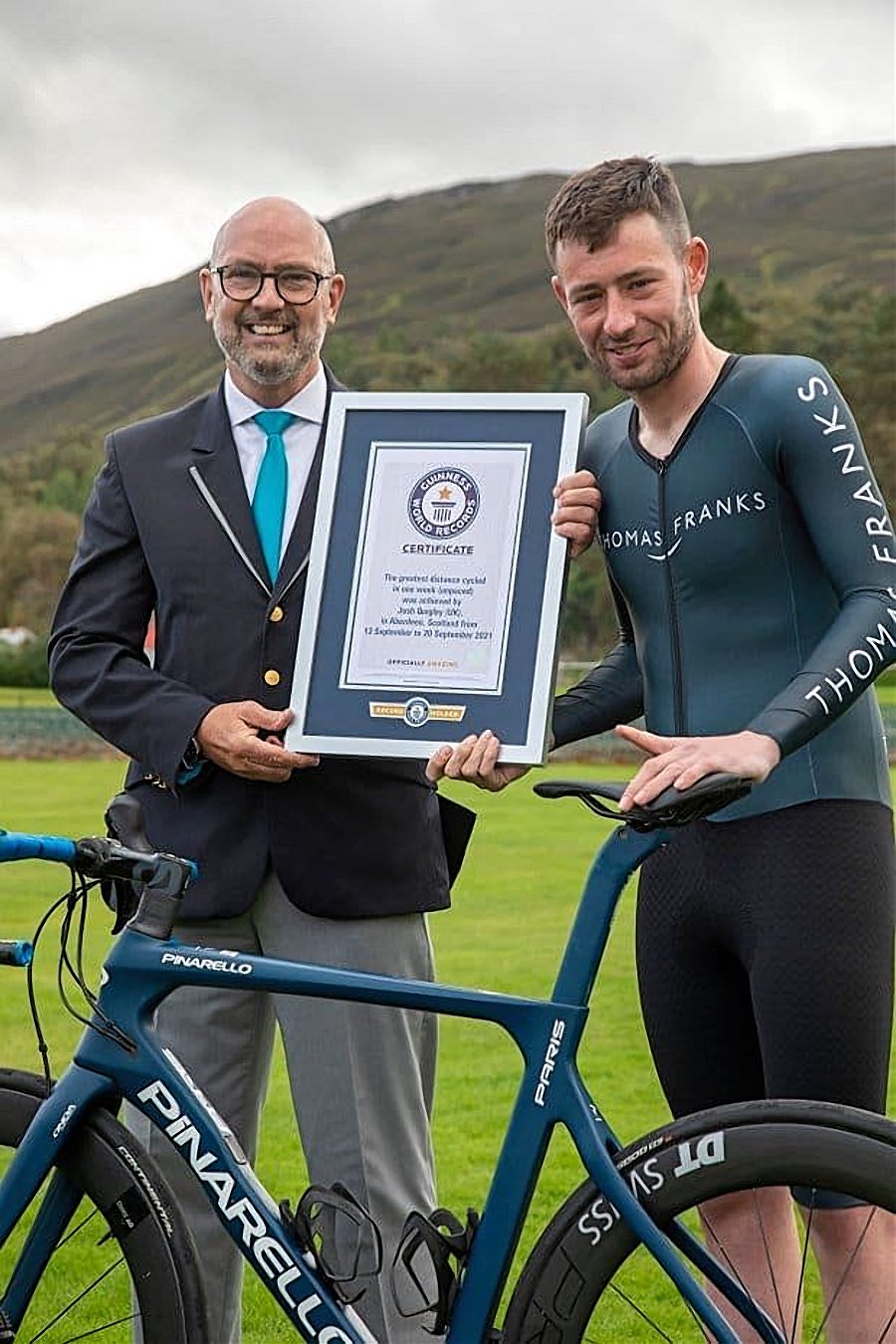
Give us the record stats and by how much did you beat the old record by?
“2,179.66 miles or 3507.8 kilometres was our official distance, meaning that we beat the old record by 1.75 miles or 2.82km.”
What’s next?
“My dream is to become the first ever Scottish winner of the Tour de France.
“For now I’m just taking it one step at a time and focusing on my 2022 racing season and establishing myself as a successful road racer on the British domestic scene and proving I can race.
“My main goal in 2022 is to get signed by a professional racing team.
“In terms of what’s next and the first steps, I’m in a really fortunate position that I’m already a full time professional athlete and can just put all my time and energy into this and I’m lucky that I’m going to be spending most of my winter out in Spain on winter training camps training and preparing for 2022.
“I’m going out for two three week camps between now and Christmas and then spending seven weeks out there in January and February.
“Most of the training I’ve done in cycling has just been endurance and ultra-endurance, so I have a bit of work to get up to speed and add the high end power to my endurance.
“But I know through some of the numbers I’ve done in training in the last year that I can get to where I need to be and that I do have the physiology to get to the highest level.
“In less than three years I’ve gone from a total amateur doing nine mph average rides to one of the best ultra-endurance riders in the world, so I believe over another five years I can get there.
“The biggest challenge I face will be the lack of racing experience and bike handling skills needed to ride at speed and race.
“But I take great inspiration from guys like Roglic who had his first bike race in 2013 and won a stage of Le Tour in 2018 and came a whisker away from winning it in 2020.
“I know it’s possible and I’ve got all the attributes, characteristics and support to become a champion at the highest level of this sport and that’s what I’m committed to achieving.
“2026 is my year.”



